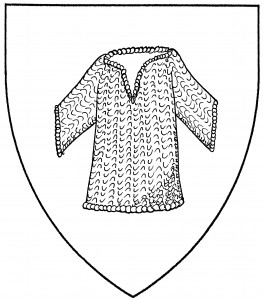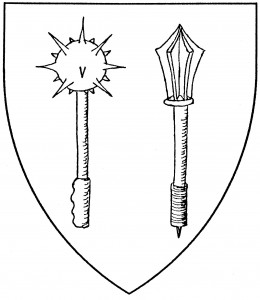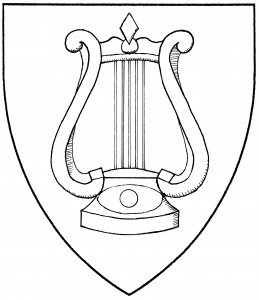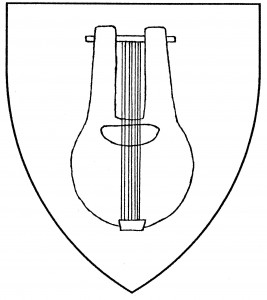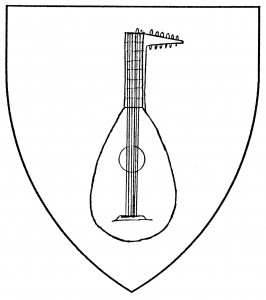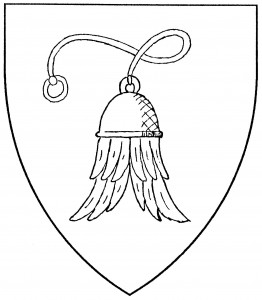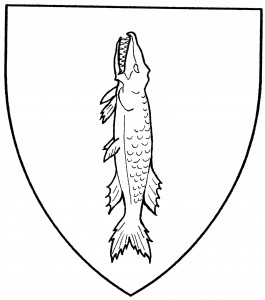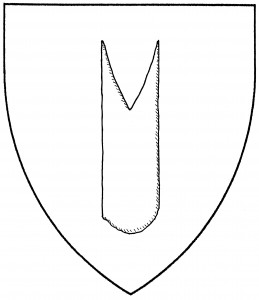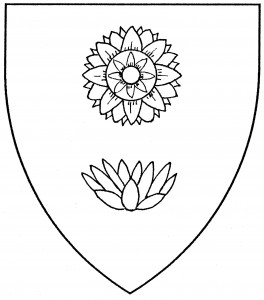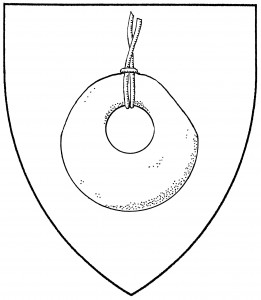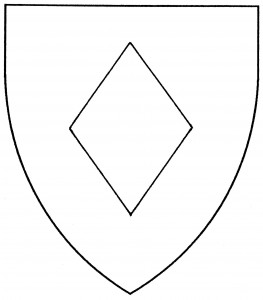
Lozenge (Period)
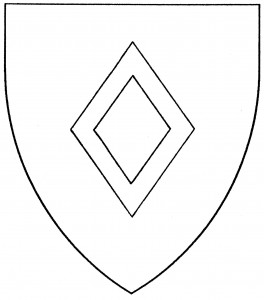
Mascle (Period)
A lozenge is a rhomboid shape. It’s an ancient charge, dating from at least 1275, in the arms of Bautersem or Baunstersein [Asp2 220]. The lozenge is usually drawn with one axis longer than the other; that axis is palewise by default. It may also be found occasionally as a delf saltirewise. The exact proportions are determined by the composition of the armory, and are left to the artist’s license.
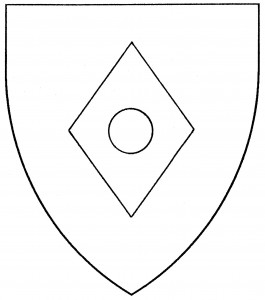
Rustre (Period)
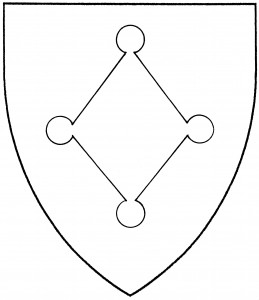
Lozenge pometty (Period)
Variants of the lozenge include the “mascle”, a lozenge voided, found in the arms of the Earls of Winchester c.1285 [ANA2 485]; the “masculyn”, a mascle flory at the points, found in the arms of Henry Pay, d.1419 [DBA4 200]; the “rustre”, a lozenge pierced with a circular hole [de Bara 47]; the “lozenge pometty”, found in the arms of van der Vliet, c.1370 [Gelre 85]; and the “lozenge ployé”, the Society’s term for the “napkin” (buqja), found in the arms of Qasrauh b. ‘Abdallah, 1413 [Mayer 185].
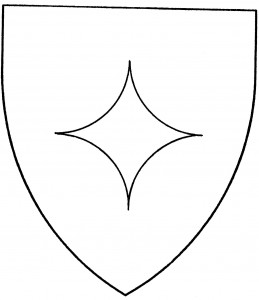
Lozenge ployé, or Arabic napkin (Period)
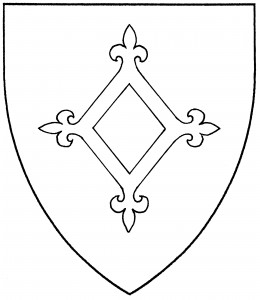
Masculyn (Period)
A red mascle has been adopted as the symbol of the International Red Crystal: its use on argent backgrounds is not permitted in Society armory.
The lozenge is considered a shape upon which arms may be borne; thus, like the escutcheon, when used as a fieldless badge it must not itself be charged.
Some texts cite the fusil as a “skinnier” variant of the lozenge. This error was common until the last few decades, when thorough heraldic research disproved it. The medieval fusil was a segment of an indented ordinary: e.g., a “bend indented” and a “bend of fusils conjoined” were interchangeable blazons. The fusil had no existence outside that usage, and its dimensions were not necessarily skinny. By contrast, the lozenge was an independent charge like any other.
For related charges, see polygon. See also vêtu.
The Shire of Black Diamond bears: Or, a lozenge within a laurel wreath sable.
Mathild de Lilburne bears: Sable, three lozenges argent.
Teceangl Bach bears: Sable, seven mascles conjoined three, three and one argent.
Anna Malakina bears: Or, three rustres gules.
‘Ayisha bint Mujir bears: Argent, a fess and in base a goblet azure charged with a lozenge ployé argent.
Coryn of the Wode bears: Sable, a pine tree eradicated and on a chief Or three lozenges pometty gules.
Amabilia Thexton bears: Azure, a masculyn argent.
